Did you know a small leak in your house can waste 10,000 gallons of water annually?
Not only is this bad for the environment, but it can skyrocket your water bill and cost you thousands of dollars in unnecessary plumbing costs.
And if you don’t know what to look for, you won’t be able to catch problems like leaks before they get worse.
Thankfully, our Ultimate Plumbing Guide for Denver is here to help.
In this guide JD’s Plumbing in Denver will cover the most common household plumbing problems and issues, their fixes, when to hire a plumber, and more. Keep reading to learn everything you need to know to keep your home’s plumbing systems functional and leak-free.
- What to Know Before You Start
- Find the Emergency Shutoff Valve
- Common Causes of Drain Clogs
- Bathroom Plumbing
- Toilet Problem Areas
- Bathroom Sinks
- Bathroom Faucets
- Showers
- Bathtubs
- Kitchen Plumbing
- Kitchen Sinks and Faucets
- Dishwasher
- Basement Plumbing
- Outdoor Plumbing
- When to Hire a Plumber
- Your Questions Answered
What to Know Before You Start
Before you do any inspection or plumbing maintenance, you need to understand your home’s water supply.
This means knowing where the water is coming from and where the used water goes.
Every home plumbing system has an incoming cold water supply. This is necessary for all the cold water taps and faucets, as well as for the water heater. These hot and cold water lines connect to all the places you’ll be using them, such as sinks and bathtubs.
A crucial part of your home’s plumbing is the main drain. This drain helps sewage leave your home. It’s connected to a series of smaller drains connected to each fixture that uses water.
Now that you know how interconnected your home’s plumbing is, it’s easy to see how even a small leak or blockage can potentially cause a huge problem.
If there’s an issue with the water supply, a leak is usually to blame. If your sink won’t drain, then the most common culprit is a blockage. While blockages are most common in bathrooms and sinks, they can happen anywhere you have plumbing.
What Is A Smart Home Plumbing Systems?
Smart Home Plumbing Systems are revolutionizing the way we manage water usage and maintenance in our homes. By integrating advanced technology, these systems allow homeowners to monitor water flow, detect leaks, and control plumbing fixtures remotely through a smartphone or other connected devices. This not only enhances convenience but also contributes to water conservation, helping reduce utility bills and minimize the risk of water damage.
In addition to offering real-time alerts for potential issues, Smart Home Plumbing Systems can be programmed to optimize water usage based on individual habits and preferences. They can automatically shut off water during a leak, ensuring immediate action to prevent further damage. With the growing emphasis on sustainability and smart living, these systems represent a significant step forward in making homes more efficient, safe, and environmentally friendly.
Find the Emergency Shutoff Valve
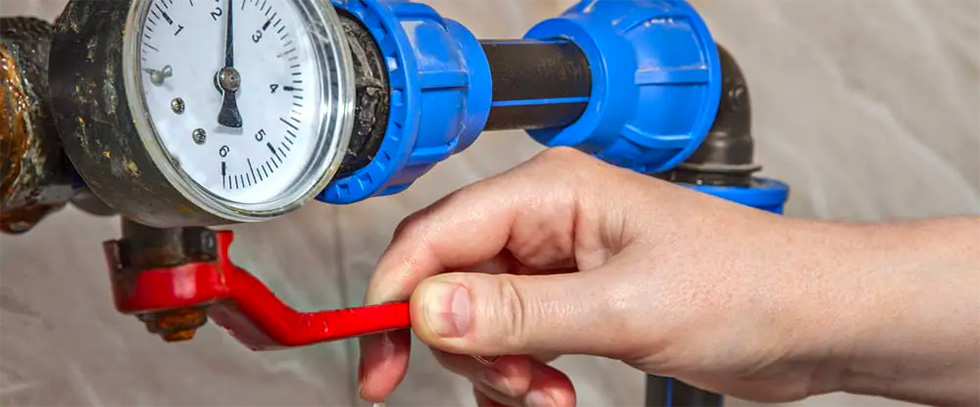
Before you start any DIY plumbing repairs, you need to know where your main water supply valve is. This is because major leaks can quickly cause a lot of damage to your home.
The main water supply pipe in your house is usually located on a wall in your basement. The first valve on the pipe is usually the main shutoff. To block the water supply, rotate the handle clockwise until you hear the water stop flowing.
If you’re not sure where the emergency shutoff valve is, you can ask a plumber in Denver to help you find it.
Next, let’s cover the most common plumbing problems you’ll find in each room of the house and how to fix them.
Bathroom Plumbing
Bathrooms are often the victims of plumbing issues because they have so many pipes and fixtures and sometimes will requires a plumbing remodel.
If you notice plumbing issues in your bathroom, don’t panic. This doesn’t automatically mean that the previous homeowners installed things incorrectly.
Occasional bathroom plumbing issues are common simply because you use these rooms so often.
Common Causes of Drain Clogs
1. Hair: One of the most common causes of drain clogs is the buildup of hair in the pipes. Hair can easily get trapped and tangled in the drains, especially in the bathroom, where people often wash their hair. Over time, this hair can accumulate and form a blockage that restricts the flow of water.
2. Soap Scum and Residue: Soap scum and residue can also contribute to drain clogs. When soap combines with minerals in the water, it forms a sticky substance that can cling to the walls of the pipes. This can gradually build up and narrow the diameter of the pipe, leading to clogs.
3. Food Waste: In the kitchen, food waste is a common culprit for drain clogs. Grease, cooking oil, and leftover food particles can all accumulate in the pipes and solidify over time. This can create a stubborn blockage that requires professional assistance to remove.
4. Foreign Objects: Accidentally dropping small objects or flushing them down the toilet can result in drain clogs. Items such as toys, jewelry, cotton swabs, and dental floss should never be disposed of in the drains as they can easily get stuck and obstruct the flow of water.
5. Mineral Buildup: In areas with hard water, mineral buildup can occur inside the pipes. Hard water contains a high concentration of minerals such as calcium and magnesium, which can accumulate over time and restrict water flow. This buildup is often referred to as limescale and can contribute to drain clogs.
6. Tree Roots: Tree roots can sometimes infiltrate underground pipes and cause clogs. Roots are attracted to the moisture and nutrients inside the pipes and can grow and expand, eventually causing blockages and even pipe damage.
7. Aging Pipes: Over time, pipes can deteriorate and become susceptible to damage and clogs. Older pipes made of materials like cast iron or galvanized steel are especially prone to corrosion and buildup, which can lead to frequent clogs.
It’s important to be mindful of these common causes of drain clogs and take preventative measures to avoid them. Regular maintenance, such as cleaning the drains and using drain covers to catch hair and debris, can help keep the pipes clear and prevent clogs from occurring. When clogs do happen, it’s advisable to seek professional assistance to properly remove the obstruction and prevent further damage to the plumbing system.
Toilet Problem Areas
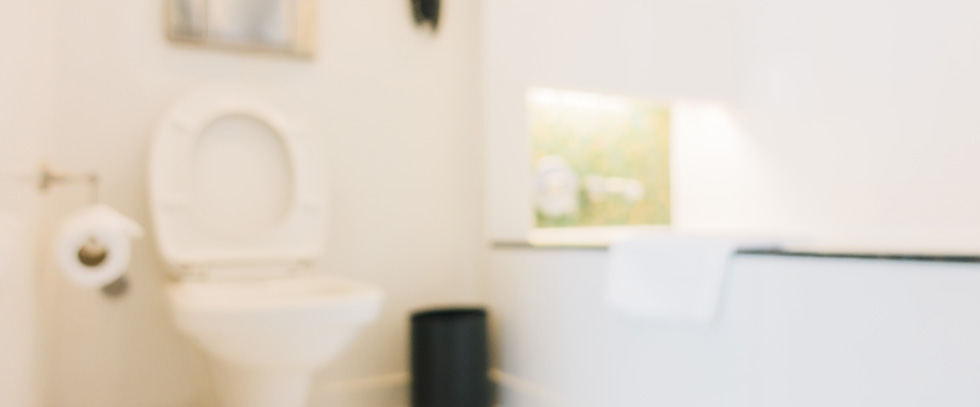
To understand how your toilet runs into problems, you first need to know how the mechanism works.
When you flush your toilet by pushing the handle down, it opens a valve at the bottom of the water tank. The open valve lets water flow into the toilet bowl to refill it.
The water that fills the inner bowl pushes waste into the drainpipe that runs through the floor. As the water tank empties, a fill valve opens up to add more water to the tank.
The biggest problem areas include the water supply, the toilet leaking at the base and the flush and fill valves.
If any of these parts malfunction, they cause common issues like refusal to flush or a running toilet.
Below are some of the most common issues and how you can repair them:
Clogs
In this scenario, your toilet either won’t flush at all or it refills very slowly. Don’t keep trying to flush—this can just make the blockage worse and cause everything to overflow.
First, you should try to use a plunger to remove the blockage. If that doesn’t work, try using a snake. If you don’t have one or the blockage is serious, you’ll have to call a plumber for plumbing services to deal with the clog for you.
Another sign you have to call a plumber is when water or sewage comes back up out of the drain. If sewage comes back up from other pipes in your house, this could indicate a larger and more serious problem. Your sewer lines could be clogged too.
Water Overflow
If you get impatient with your clogged toilet and kept trying to flush it, chances are it’s going to overflow.
To stop it from overflowing, look for the valve connected to the water tank. If you shut off this valve, it will stop water from flowing into the toilet.
Sometimes, you may not be able to find this valve. In this case, locate your home’s main water supply and shut it off.
Work on removing the blockage and make sure the inner bowl is emptying at a normal speed. Only then should you reopen the water valves.
Leaks
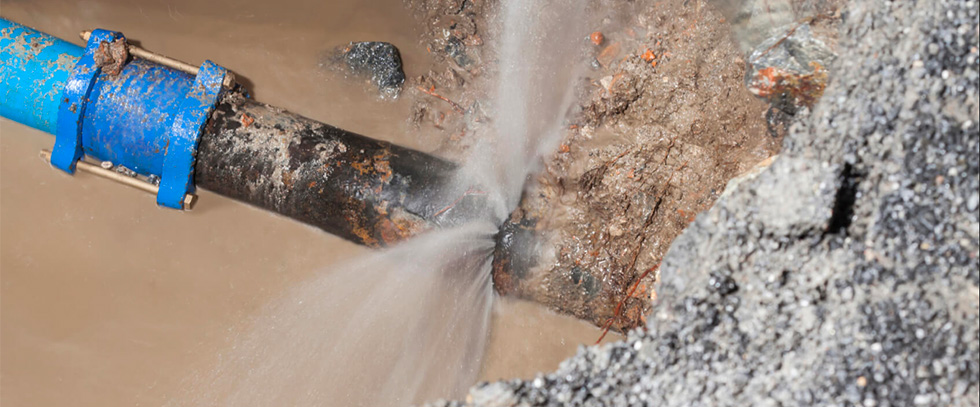
Three kinds of leaks happen most often with your toilet. The first is that there’s a leak somewhere in the water supply. This could come from any pipes or hoses connecting to the water tank.
You’ll need to shut off the water supply, repair the connected pipes, and turn everything back on to repair this leak.
Unless you have plumbing experience, you’ll have to call a professional toilet repair specialists.
The second type of leak happens when there is a problem with the connection between the back of the bowl and the water tank. In this case, the gasket that seals the tank to the bowl needs immediate replacement.
You’ll need to drain the water tank and remove it from the bowl to fix this issue. This will give you space to install the gasket. Again, it’s best to leave this to a plumber if you’ve never done it before and are not an expert in-home repairs.
The third issue is a leak at the base of the toilet. The telltale sign here is that there is water on your bathroom floor all the time or right after you flush.
This repair is complex because the water tank and bowl must be drained and unbolted from the floor. The ring is then replaced, and the entire fixture is put back.
Won’t Stop Flushing
As with clogs, you can often repair a constantly flushing toilet on your own. Even if you make a mistake, the repair will not likely result in serious water damage.
First, try jiggling the handle a few times. Sometimes, the handle gets stuck and keeps causing the toilet to flush.
If this doesn’t work, the problem is likely either the flush or the fill valve.
If the flush valve leaks, it keeps letting water into the water tank and inner bowl.
When the fill valve isn’t properly adjusted or is broken or defective, then it will let the water keep flowing into the water tank.
To fix the issue of non-stop flushing, inspect the flush valve and fill valve. Once you’ve determined which is causing the problem, all you need to do is replace or adjust one of these two valves. You’ll want to get this done as soon as possible to save water and have a more water-efficient home!
Gas Lines
Gas piping is an important aspect of home maintenance. It’s a system of pipes that transport natural gas from the supply line to various appliances in your house. Depending on the size and complexity of your home, gas piping may carry natural gas to a single appliance like a furnace or cooktop or multiple units such as a water heater, dryer, and more.
The entire gas piping system consists of branch lines that run directly to individual appliances in your home, while drop lines run vertically down lower than the appliance height. This allows the natural gas to flow efficiently into each unit throughout the home. Gas pipe sizing must take into account the total BTU load (British Thermal Unit) capacity by computing pipe lengths and diameters based on this figure, yielding safety and optimal performance for each device. Professionals should always be consulted when running any sort of gas piping or gas line repairs, incorrect installation can lead to long-term dangers such as carbon monoxide poisoning due to leaks or poor ventilation. Properly maintained and regularly inspected gas piping is essential for providing proper functioning equipment running off natural gas power in any household situation.
Gas Line Maintenance
Bathroom Sinks
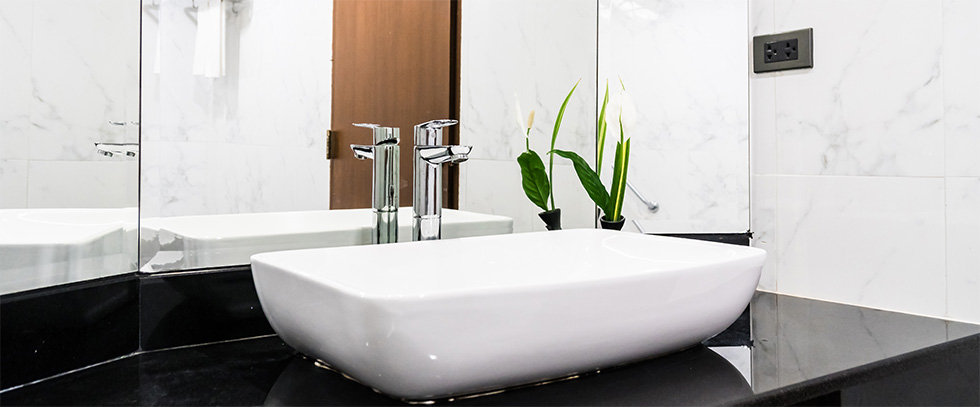
Sinks and faucets are another huge problem area in both residential and commercial plumbing.
Items like soap and hair can cause just as much of a drain blockage problem as food does in your kitchen sink.
Never try to plunge a bathroom sink with your plunger. Not only is this unsanitary, but it doesn’t usually work. Instead, try pouring in some good-quality drain cleaner.
If this doesn’t solve the problem, then the clog is probably stuck further down the pipes and you may need to schedule a drain cleaning.
The difficulty is that most of your drain pipes are behind the plaster and drywall. They also twist and turn around your home’s structural elements. So while the clog itself may not be that large, reaching it can be difficult.
In this situation, you’ll have to call a plumber to help you since reaching the clog will take expertise.
What to Do With a Smelly Sink
Does your bathroom sink smell like rotten eggs? This smell is usually caused by microbes living in your drain.
As long as the bathroom drain was installed correctly, you can often fix this problem with a simple DIY solution. All you need is a bottle of 3% hydrogen peroxide. If you don’t have this, you can find it at your local drugstore.
You’ll want to pour 2 cups of this solution into the drain. It’s best to do this at night because you want to let the hydrogen peroxide sit in your sink for at least 8 hours. Make sure not to use the tap during this time.
If this doesn’t work, you’ll have to call an expert to take a look.
Bathroom Faucets
If one leaky faucet in your home drips three times per minute, it will waste more than 104 gallons of water per year. This number only multiplies if you have more than one leaky faucets in your home.
A leaky faucet can also damage your bathroom sink and other surfaces by causing rust and rot. Excess water around your pipes can ruin them and cause even more leaks. You can find more information here on leaky water pie repairs.
If your faucet or pipe leaks around wood, it can create rot and mold that can cause health problems and damage the structure of your home.
So even if a leak seems minor, you need to fix it before it causes more damage.
Sometimes, all your dripping faucet needs is a new faucet washer. In others, you may need to replace the faucet cartridge. This plastic piece in your faucet controls the flow of water.
Replacing a cartridge takes about an hour and should stop your faucet from leaking around the handles and the base.
If you have experience with DIY repairs and improvements, you can probably fix these two issues yourself.
But sometimes, bathroom faucets can have parts that are corroded. This is especially true of older faucets. If you try to repair a corroded faucet, it can break apart and cause more problems.
Thankfully, many faucet manufacturers offer spare cartridges for free. Sometimes, they even offer free replacement faucets.
So before buying new parts, be sure to call your faucet’s manufacturer and ask if you can get any replacements for free.
Showers
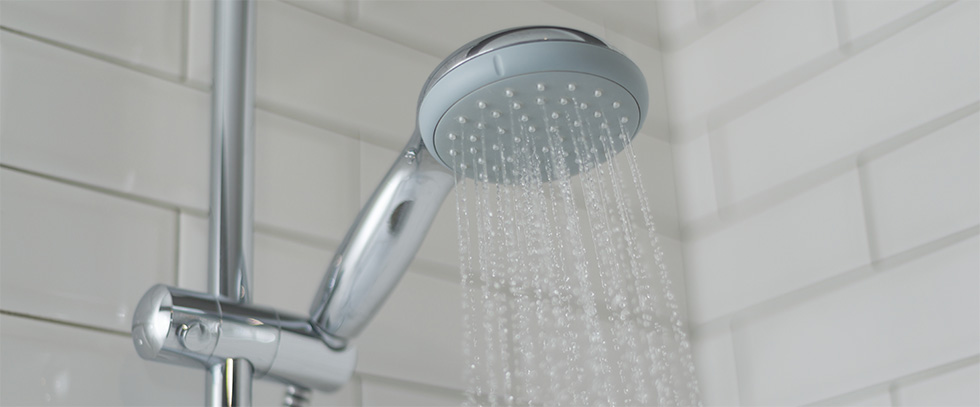
The hot and cold water that comes into your shower is delivered by a faucet that’s behind the shower wall.
The biggest problem areas for showers are the faucet valve, drain, and the shower’s enclosure.
The shower enclosure is the glass part around the shower that stops water from splashing across the rest of the bathroom.
Clogged Shower Drain
In the case of a clogged shower drain, the culprit is usually a buildup of hair or soap. Try using a liquid drain cleaner to remove the clog. But if this doesn’t work, you’ll have to call a plumber and schedule drain cleaning services.
As a preventative measure, you can get a mesh strainer that fits the opening of your drain.
This will catch any drain-clogging debris like hair or chunks of soap. Just be sure you empty the strainer into the garbage and give it a good rinse to prevent mold.
Leaky Shower Head
Leaky showerheads are most often caused by problems with the valve. For most showers, only one valve controls the flow of hot and cold water.
When this valve is worn out, it can cause leaking and increase your water bill before you know it.
If you know what you’re doing, you can shut off your main water supply and replace the valve yourself. But if you’re not sure how to do this, you’ll want to hire a plumber so you don’t cause any extra damage.
Whether you do this repair yourself or hire a plumber, call the showerhead manufacturer to see if they offer any spare parts.
Smelly Shower Drain
This is the same issue as a smelly sink drain. You’ll want to pour 3% hydrogen peroxide down the drain and leave it overnight.
If this doesn’t take away the smell, then the issue isn’t microbial.
You’ll want to call a professional to take a look as the problem could be with installation or with something deeper inside the drain.
Mold
If you notice mold growing around your shower, you can usually stop it by turning on your bathroom fans. Make sure to keep them on for 20 minutes after you shower.
You can also keep your shower door open or draw the curtain back to let even more ventilation into the area.
Bathtubs
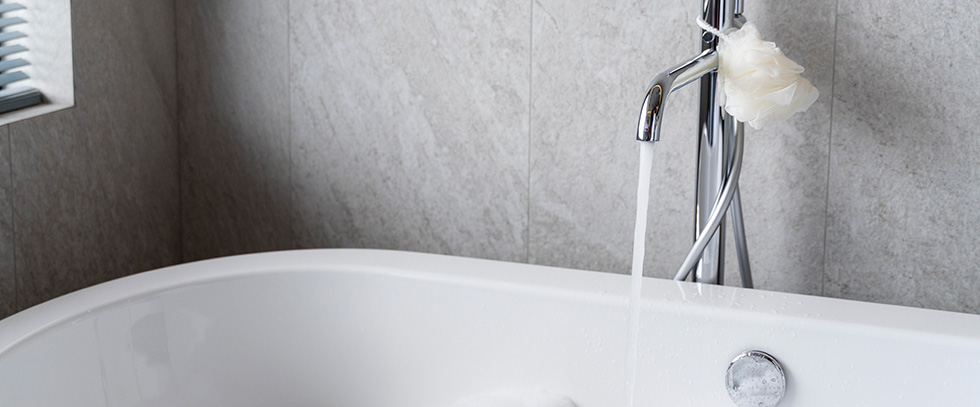
Bathtubs and showers share similar plumbing issues like leaky faucets and smelly drains. So if your tub has these issues, you can fix them the same way you would fix your sink.
One common bathtub issue that tends to cause problems is damaged caulking. Caulk is a flexible and non-porous material that professionals use to seal gaps. In your bathroom, you’ll find caulk around the edges of your inset bathtub.
This helps to seal it to the floor and makes sure water doesn’t get underneath the bathtub or behind the walls.
If the caulking around your bathtub (or shower stall) is damaged, you can fix it yourself, but it won’t be easy. You will also need a caulking gun to do this. This is because it’s hard to remove the old caulking, which you need to do first.
You’ll need to make sure the area around the caulking is clean and dry, and then use a solvent to help dissolve the old caulking.
Then, apply new caulk to the seams and make sure the edges are clean.
If you’d rather hire a professional to do this, you can ask a handyman to help with basic caulking. Plumbers in Denver usually won’t come and do silicone caulking by itself, but they’ll likely do it if the plumbing job involves installing a new sink.
Kitchen Plumbing
The kitchen is one of the most complex areas in the home when it comes to plumbing.
This is because your kitchen has the most features and appliances that depend on water. These include faucets, drains, dishwashers, and refrigerators with water dispensers and ice makers.
On top of this, kitchen faucets tend to be more complex than bathroom faucets. The ones in your kitchen often have other features like garbage disposals and spray hoses, which increase the chance of something leaking or clogging.
How to Fix a Leaking Washing Machine Hose
No one wants to be greeted by a pool of water when they are about to do their laundry. Unfortunately, a leaking washing machine hose is often the cause of these unexpected puddles which can lead to costly damages and repairs. The seriousness of these damages cannot be understated since an undiagnosed leak can pour gallons of water in your home while you are away, resulting in carpet and ground flooding, expensive insurance bills, and possibly even new furniture or construction due to water damage.
That is why it is essential for homeowners to take all necessary precautions such as regularly checking for signs that the washer hose may need replacing such as kinks, wear, or aging. If there is already a tear or crack present then it must be fixed as soon as possible to prevent further damage and flooding. Fixing a broken washing machine drain hose can actually be easier than most people think; all you have to do is buy a replacement hose from your local hardware store, remove the old one, and replace it with the new one. With some materials and 10 minutes of your time, you can save yourself lots of money and huge inconveniences down the line.
Kitchen Sinks and Faucets
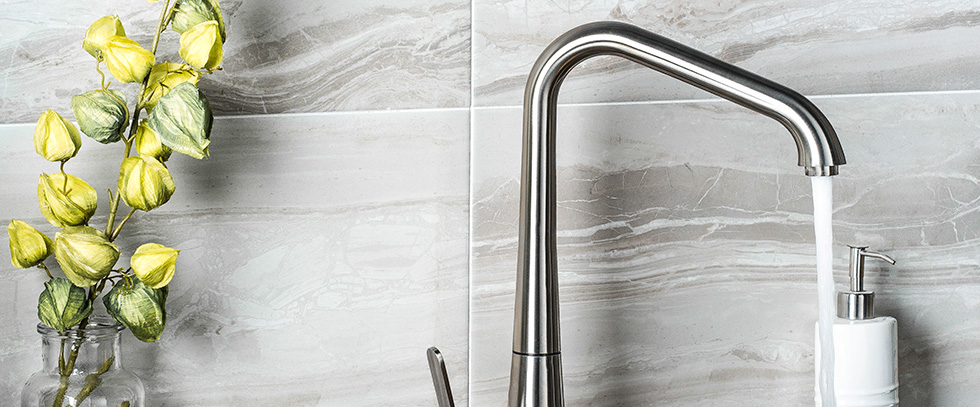
The most common plumbing issues with kitchen sinks and faucets are leaks.
These leaks are usually located in three places:
- Where the sink attaches to the countertop
- The sink’s drain pipes
- Between the faucet and the water supply pipes
To fix leaky or dripping faucets, you first need to find out if you have an older faucet or a modern one.
Older faucets used a washer from the 1970s and earlier to stop water flow when the tap gets shut off. A washer is a small rubber disk that comes in different sizes.
When you turn your faucet off, the mechanism inside presses against the washer. This creates a seal and cuts off the water supply.
But when washers get old, the rubber gets cracked and brittle. This can cause small amounts of water to come through even when the tap is turned off, resulting in leaks.
Newer faucets use a cartridge instead of a washer. The cartridge is a plastic piece in the faucet that controls the flow of water. When this leaks, the solution is to replace the cartridge.
Many repair-savvy homeowners opt to correct a leaky faucet themselves by either replacing the washer or the cartridge.
Clogged Kitchen Sinks
Clogged kitchen sinks are a common issue because food and grease can fall down your drain even when you use a sink strainer.
First, try using a special kitchen sink plunger to get the debris out. For sanitary reasons, you should only use this plunger for the kitchen sink.
The key with using a sink plunger is pushing up and down with quick movements.
If this doesn’t work, try using drain cleaner liquid. Never plunge after using drain cleaner. This substance is corrosive, and plunging on top of it could cause the liquid to splash on your face and eyes.
If neither of these solutions works, you’ll have to use a drain snake. If you have a toilet snake, remember that these are much larger than kitchen snakes. Not only could this larger snake get stuck in your kitchen drain, but you’ll contaminate your kitchen with bacteria.
The problem with using a drain snake is that you need to open the drain trap so you can reach inside. If you’ve never done this before, it’s best to call a plumber to deal with the clog for you.
Leaking Sink Cabinet
If you open up the cabinet under your sink and find a puddle of water, the problem is likely a leaky pipe joint.
Take a flashlight and look at the bottom of your sink. Check if the leak is coming from the drain pipe. The leak may also be coming from the faucet’s water supply.
If you see this leak, you need to address it right away. Leaving it can cause your house to flood.
First, locate the flexible hose that connects the water supply pipe to the faucet.
Once you’ve found it, shut off the valve that supplies water to the pipe. Tighten the fittings by hand, moving clockwise. Then, turn the water back on and check if the leak has stopped.
If it hasn’t, leave the water turned off and call JD’s Plumbing for assistance.
Keep in mind that faulty or old caulking could cause water from around the sink to fall through the cracks into the cabinet below. Inspect your caulking for holes or wear-and-tear to see if this is the problem.
Gurgling Drain
If you hear your drain make gurgling noises, this usually isn’t because of a clog. It’s often because your sink doesn’t have an air vent installed.
Adding an air admittance valve can help solve the problem, but not all jurisdictions allow it. Your best bet is to call a local plumber and ask if installing this valve is an option for your sink.
Dishwasher
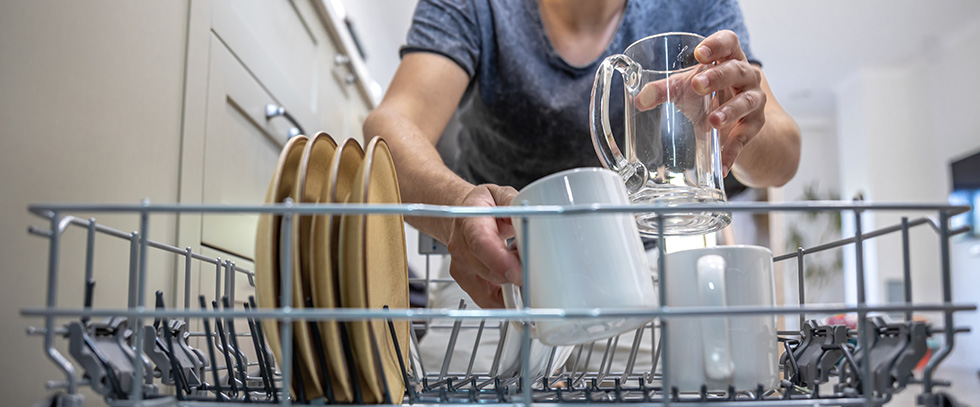
Remember that dishwashers don’t use cold or warm cycles as washing machines do.
With most dishwashers, the only water supply you need to worry about is the cold water supply.
Keep in mind that some high-end dishwashers also have their own hot water supply. So if this applies to you, check that the hot and cold water supplies are working.
Depending on your local plumbing regulation code, your dishwasher may also have an air gap. This dome-shaped fitting goes on the back corner of your kitchen sink.
The air gap lets air into the drain hose and stops the drain water from returning to the dishwasher. So if you think you have a problem with a section on air gap, be sure to consult a professional for assistance.
Dishwasher Cycling Problems
If your dishwasher won’t go through all its cycles, the problem could either be the dishwasher itself or your plumbing.
You’ll first want to check the drain screen inside your dishwasher.
If it’s full of food, this can stop the dishwasher from running properly (or even starting). Ensure to clean the drain regularly so the dishwasher can fully drain after each use.
Water Leak
If you find water on the floor every time you run your dishwasher, the problem is being caused by a faulty drain pump or door seal.
This issue is with the dishwasher itself, not the plumbing. In this case, you’ll want to call an appliance repair technician to help you.
Basement Plumbing
If you have a finished basement, it could have as much plumbing as your kitchen or bathroom.
If any of the taps in your basement are leaking, apply the same repair techniques we talked about for other taps and faucets.
The main thing to watch in your basement is the main water supply line. If you get water from your municipal water supply, there will be three components to this.
These are the main pipe (usually 3/4″ in diameter), a water meter, and a shutoff valve. Once you’ve found the shutoff valve, try closing it.
If it’s too stiff and you can’t move it, immediately call JD’s to help. You always need to be able to shut off this valve in emergency situations.
If you use a private water system, you’ll need to maintain the following:
- Pump
- Sump Pump
- Pipes
- Switches
- Valves
- Gauge
- Pressure tank
If this list is too overwhelming, come up with a checklist and arrange it according to how often you need to check each item for maintenance requirements.
Always make sure to check the pressure gauge, which is next to the pressure tank. The gauge should always read between 30 and 60 psi. If it doesn’t, call for help.
Sump Pumps
A sump pump repair is essential for ensuring that your basement or crawlspace remains dry. When it begins to fail, however, you may find yourself faced with a worsening problem or at risk of flooding. To keep preventive measures in place and fix your sump pump quickly to ensure the safety of your home, we suggest consulting our expert technicians who are knowledgeable when it comes to troubleshooting sump pumps both big and small.
From running constantly to broken switches and other components, there is a multitude of issues that require professional attention in order to prevent any untoward consequence resulting from the failure of your sump pump. Our team is available around the clock to get you back on track while repairing, replacing, or simply checking in on the condition of your secondary flood protection system—whatever the situation may be! Make sure to schedule an appointment with us today so that both you and your home can feel secure knowing that our team has got everything under control.
Sewer Ejector Pumps
Sewage ejector pumps, also referred to as sewer ejector pumps are for bathrooms, laundry rooms or other plumbing fixtures that are located lower in the main sewer or septic line. Regular gravity flow is not enough for drainage systems, therefore, a pump must be used to elevate the wastewater from the lower-positioned fixture and create more efficient drainage. These pumps use powerful pressure to lift the sewage to prevent backup and ensure adequate disposal.
Sewer ejector pumps primarily consist of an impeller with a sealed liquid chamber and an electrical motor that powers it. As it starts, suction occurs in the impeller due to submersible pressure created by the liquid inlet. This allows pollutants such as food scraps or waste products like paper towels and hair to pass between the blades of the impeller and get into the exit tube that brings it out of whatever drainage source it’s pumping through. The liquid is then repelled until wastewater passes out into storm drains or septic systems safely.
Outdoor Plumbing
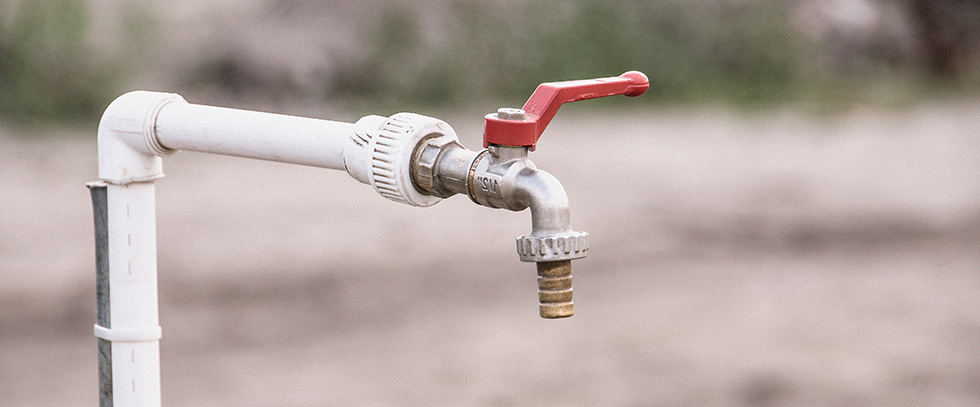
Most homes have an outdoor plumbing system with only cold water taps for sprinklers and hoses. Some homes also have hot water for outdoor taps.
The most common outdoor plumbing issues include:
- Dripping hose taps (Hose Spigots)
- Faulty yard irrigation
- Frozen pipes
If your hose tap is dripping, you may be able to take care of the problem yourself.
Keep in mind that most outside hose faucets use washers (and not cartridges) to seal off the water supply. Find the shutoff valve for the faucet and replace the washer.
If you keep having trouble closing or opening the tap, a certified plumber may have to replace it.
In the case of faulty yard irrigation (including sprinklers), the issue is likely with the system itself, not the plumbing. If you live in a cold area, you should first check that the main water feed valve is turned on.
If it still doesn’t work, JD’s Plumbing can help with seasonal sprinkler maintenance.

When to Hire a Denver Plumber
Keep in mind that commercial plumbing is more complex than residential plumbing. This is because the piping systems are complicated and travel between offices and floors.
So if you try to do a DIY repair in a commercial space and make a mistake, this could affect an office 10 floors down from you.
You also need to remember that all repairs and installations need to follow the plumbing codes of your state (including diagrams code compliant techniques).
So one of the best code-compliant techniques tips is to hire a plumber for all commercial issues and repairs.
As for residential plumbing, consider how knowledgeable you are about DIY repairs. If all you need to do is replace the cartridge in your faucet and you’ve done this before, you probably don’t need anyone to assist you.
But if you’re a new homeowner or you need complex repairs (like soldering copper or installing fixtures), then you may need to find a certified professional.
If you try to fix the issue yourself with no experience, you could make the problem worse.
If you leave leaks or clogs for too long, you could create permanent damage to your home. This is especially true if your home’s foundation is built from wood.
To reduce the chances that small plumbing problems can become major, you’ll want to follow the plumbing maintenance requirements.
You can ask JD’s Plumbing Heating and Air Conditioning to give you recommendations on how often you should be checking everything. Make a list and tape it to your basement wall or somewhere you can see it.
The Ultimate Plumbing Guide Denver: Your Questions Answered
We hope our ultimate plumbing guide for Denver helped you learn about some of the most common household plumbing issues and how to fix them.
Most importantly, know where your main shutoff valve is and how to use it in case of an emergency.
If you’re located in the Denver metro area and need plumbing assistance, JD’s Plumbing is here to help.
Not only do we have years of experience, but we take pride in straightforward, transparent pricing that fits your budget.
So whether you need help with leaky pipes or need a full sink replacement, contact us today!





